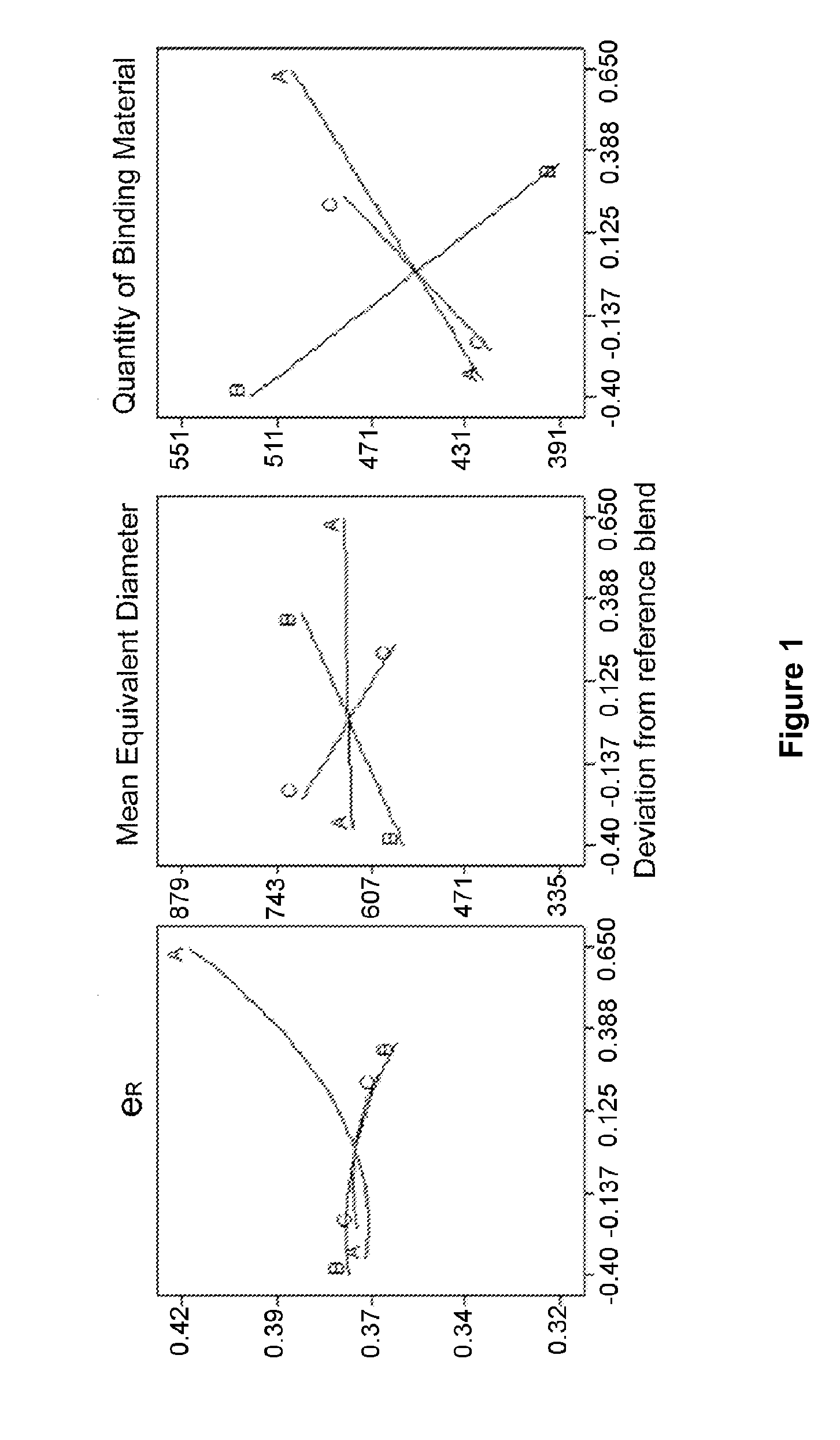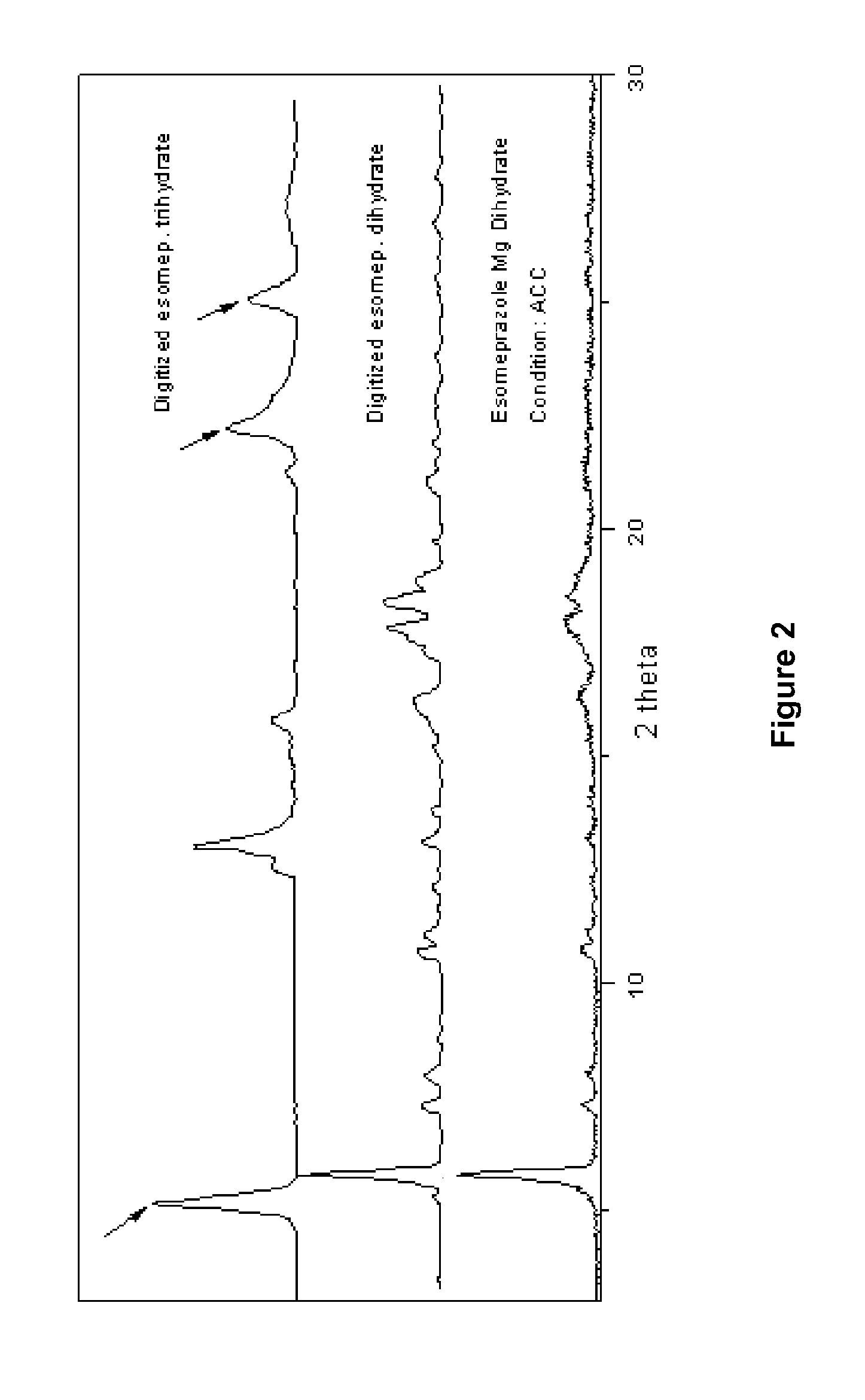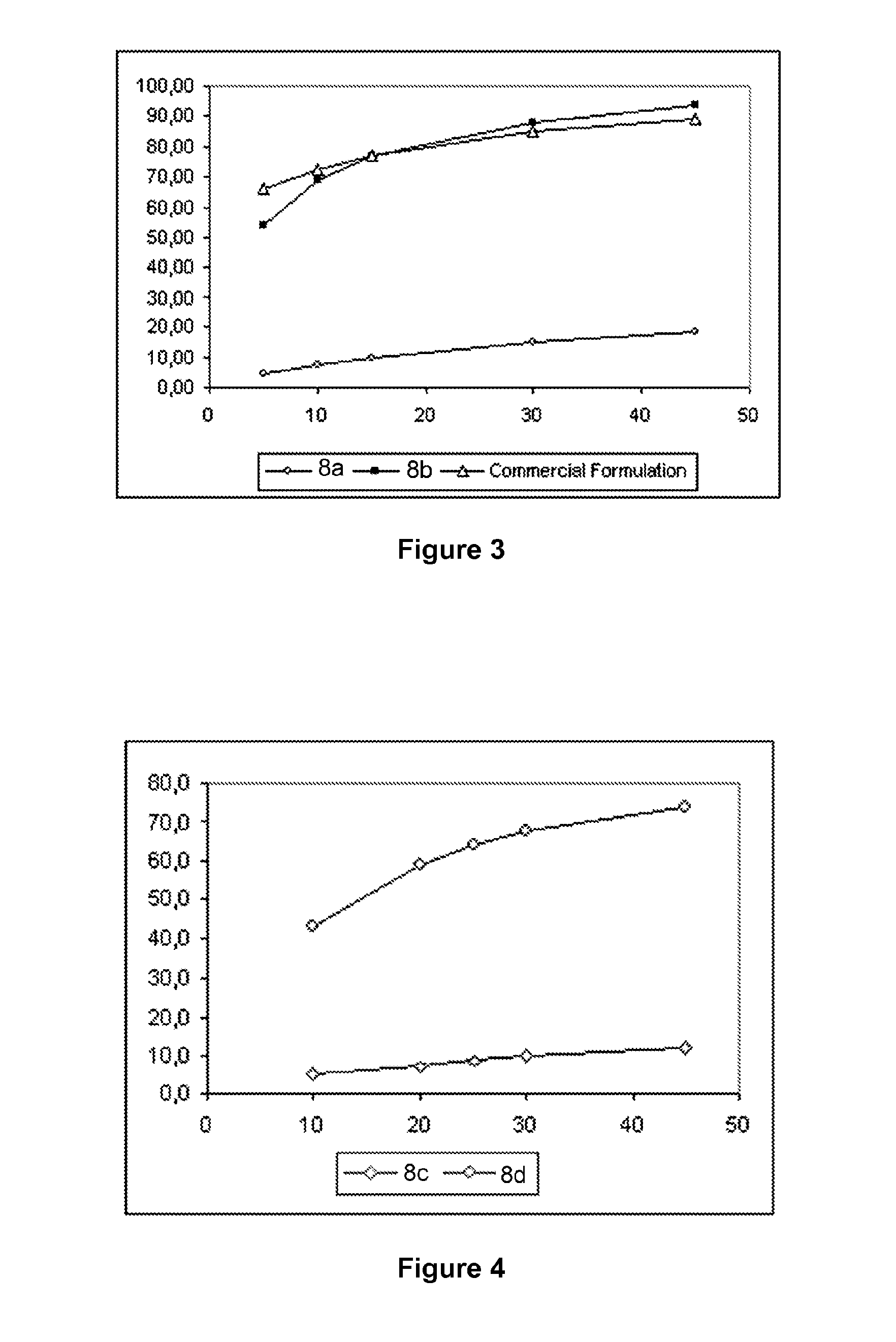Process for Producing Rapidly Disintegrating Spheroids (Pellets), Granules and/or Mixtures Thereof
a technology of spheroids and granules, which is applied in the direction of medical preparations, powder delivery, granular delivery, etc., can solve the problems of complex production processes that comprise several consecutive steps, inability to provide manipulable immediate release formulations, and inability to achieve rapid dissolution, etc., to achieve the effect of improving the quality characteristics of the produced spheroids
- Summary
- Abstract
- Description
- Claims
- Application Information
AI Technical Summary
Benefits of technology
Problems solved by technology
Method used
Image
Examples
example 1
[0070]Example 1 illustrates the slow release profile of a spheroid formulation consisting of a diluent (lactose) a spheronizing aid material (MCC) and an API (Omeprazole-Model drug A), as well as the effect of the incorporation of a super disintegrant (Crospovidone or Crosscarmellose sodium). This example is presented in order to compare the spheroids of the prior art with the spheroids produced via the process of the present invention.
[0071]Example 1a
[0072]111.5 g Omeprazole salt, 444.25 g lactose, and 444.25 g microcrystalline cellulose, were accurately weighed. In order to optimize the properties of the powder mixture in terms of uniformity prior to the pelletization process, a mixing step was adopted. The API, the spheronizing aid-excipient (MCC), and the diluent (Lactose) were sieved through an appropriate sieve (900 μm) and were blended for 5 min, until a uniform mixture was prepared. The rotogranulator was preheated at appropriate temperature, resulting in initial product tem...
example 1b
[0073]223.0 g Omeprazole salt, 388.50 g lactose, and 388.50 g microcrystalline cellulose, were formulated into spheroids using a similar process as in Example 1a. Approximately 1,300 ml of distilled water were used.
example 1c
[0074]111.5 g Omeprazole salt, 419.25 g lactose, 419.25 g microcrystalline cellulose and 50.0 g crosspovidone, were formulated into spheroids using a similar process as in Example 1a. More than 3,700 ml of distilled water were used, while the size of the spheroids did not increase, despite the successive increase in the supply rate of the binding liquid.
PUM
| Property | Measurement | Unit |
|---|---|---|
| temperature | aaaaa | aaaaa |
| melting point | aaaaa | aaaaa |
| melting point | aaaaa | aaaaa |
Abstract
Description
Claims
Application Information
 Login to View More
Login to View More - R&D
- Intellectual Property
- Life Sciences
- Materials
- Tech Scout
- Unparalleled Data Quality
- Higher Quality Content
- 60% Fewer Hallucinations
Browse by: Latest US Patents, China's latest patents, Technical Efficacy Thesaurus, Application Domain, Technology Topic, Popular Technical Reports.
© 2025 PatSnap. All rights reserved.Legal|Privacy policy|Modern Slavery Act Transparency Statement|Sitemap|About US| Contact US: help@patsnap.com



